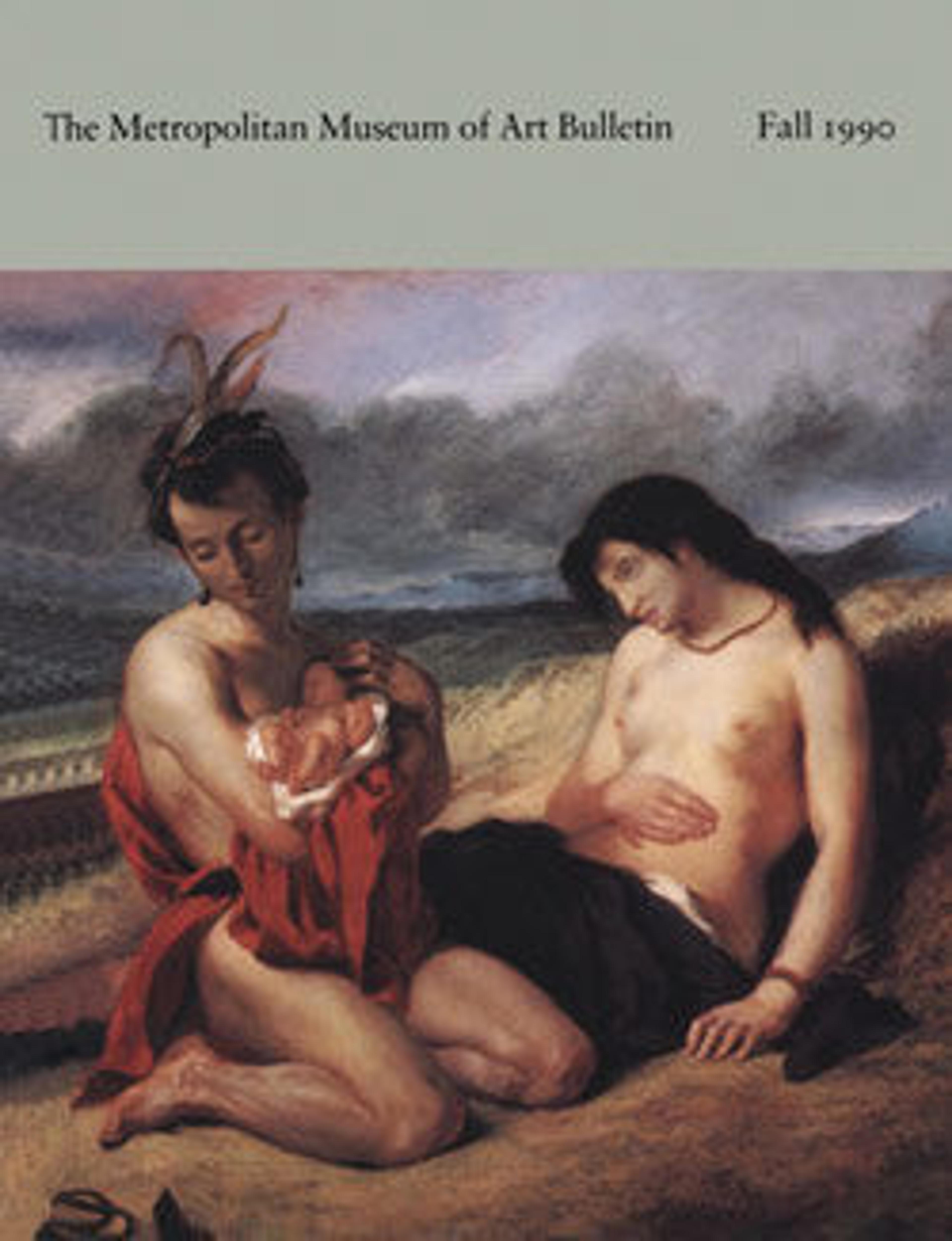Tripod Plate
Referred to by archaeologists as slateware, this ceramic vessel is a variety that was especially popular in northern Yucatan in the centuries around the turn of the second millennium A.D. The subdued colors of slateware, ranging from pale beige-whites to soft grays, are in marked contrast to the vibrant Maya polychrome ceramics of earlier times. As in this example, the decoration is often restrained. The image that adorns the inner surface of this tripod plate recalls the Mesoamerican rain deity with his round goggle eyes and toothy mouth. Applied with a fluid, spontaneous brushstroke, the viscosity of the "trickle" paint causes it to run when first applied, contributing to the organic nature of the painted motif.
Artwork Details
- Title:Tripod Plate
- Date:9th–10th century
- Geography:Mexico, Mesoamerica
- Culture:Maya
- Medium:Ceramic
- Dimensions:H. 2 1/2 x Diam. 10 7/8 in. (6.4 x 27.6 cm)
- Classification:Ceramics-Containers
- Credit Line:Gift of Arthur M. Bullowa, 1989
- Object Number:1989.314.20
- Curatorial Department: The Michael C. Rockefeller Wing
More Artwork
Research Resources
The Met provides unparalleled resources for research and welcomes an international community of students and scholars. The Met's Open Access API is where creators and researchers can connect to the The Met collection. Open Access data and public domain images are available for unrestricted commercial and noncommercial use without permission or fee.
To request images under copyright and other restrictions, please use this Image Request form.
Feedback
We continue to research and examine historical and cultural context for objects in The Met collection. If you have comments or questions about this object record, please contact us using the form below. The Museum looks forward to receiving your comments.
